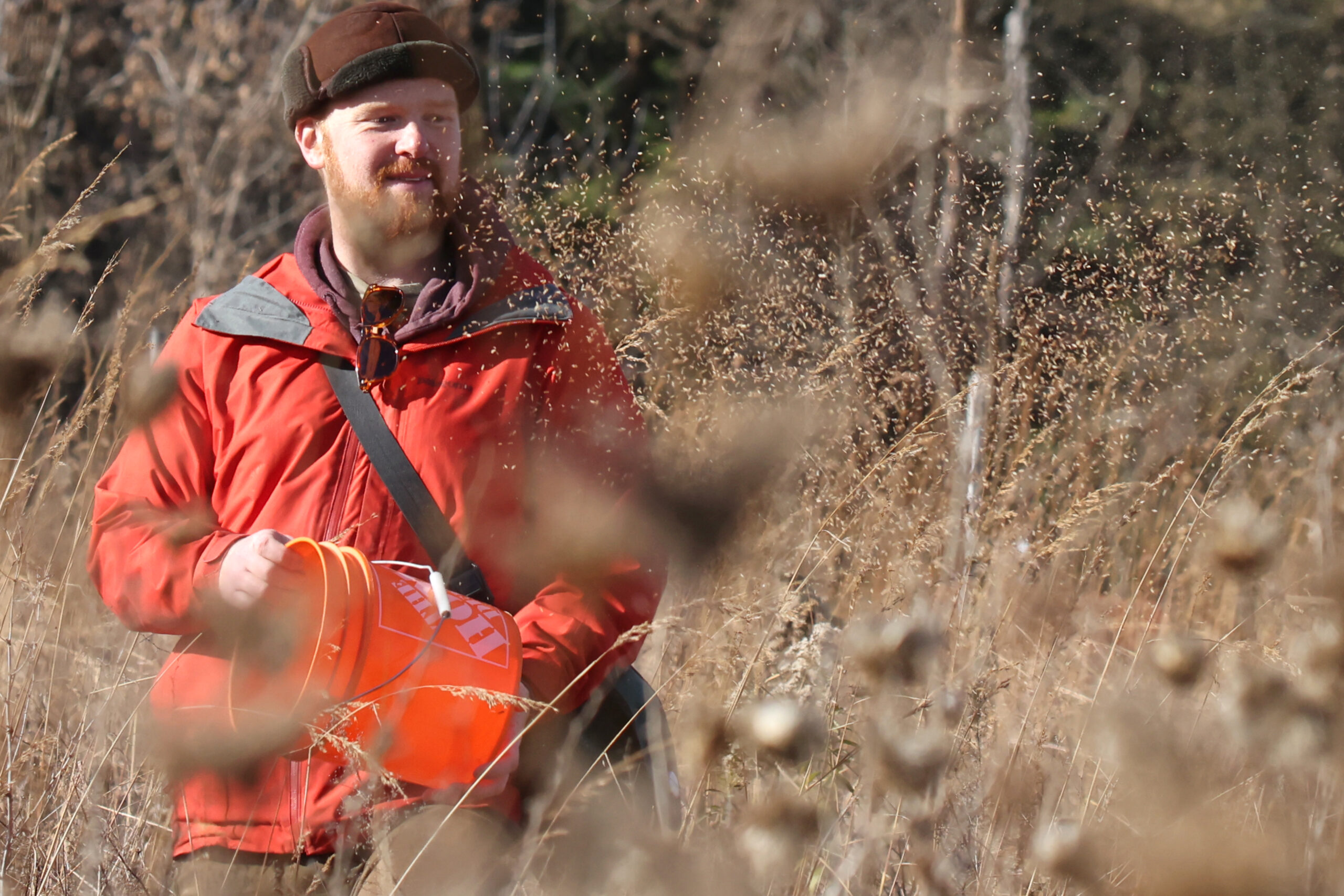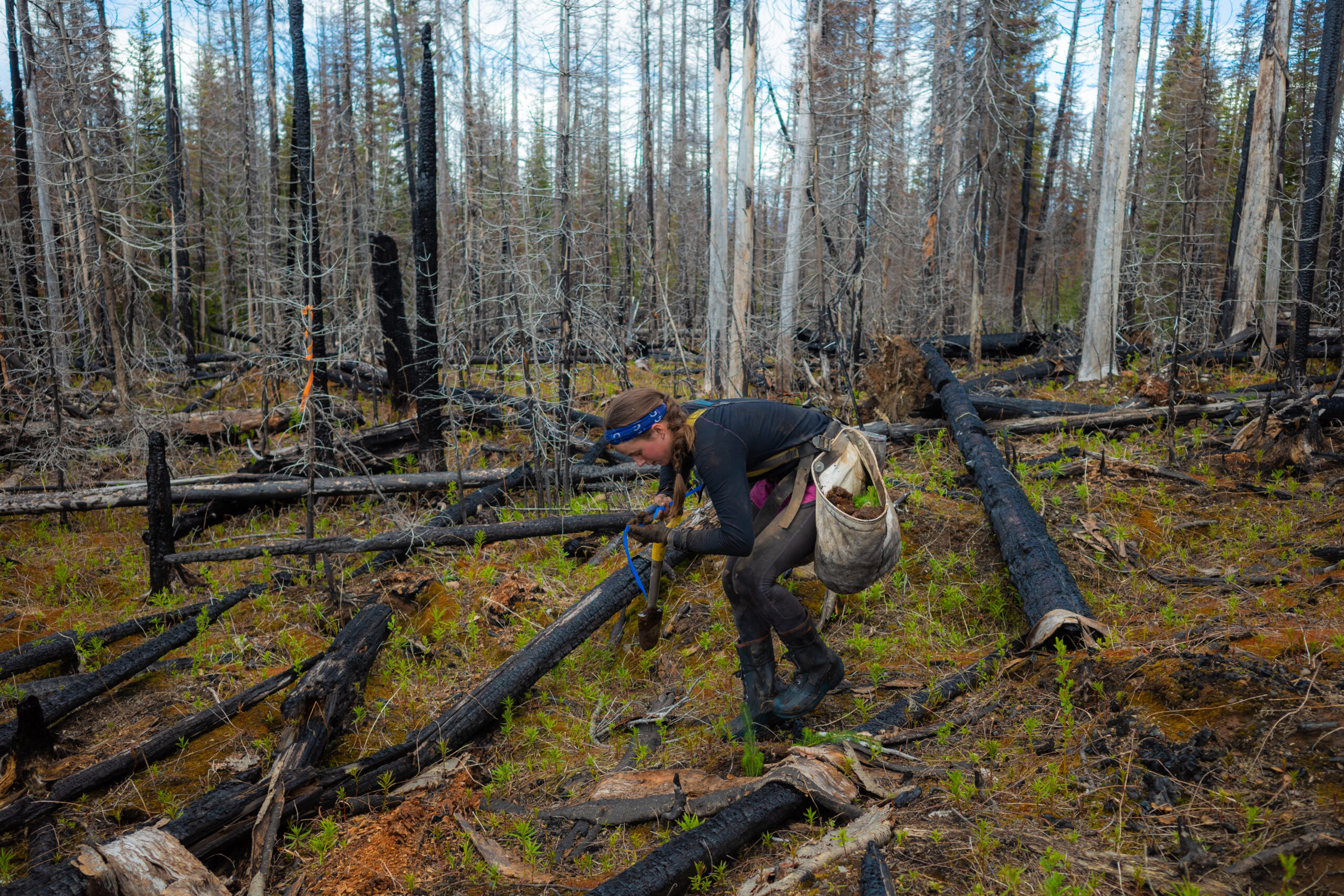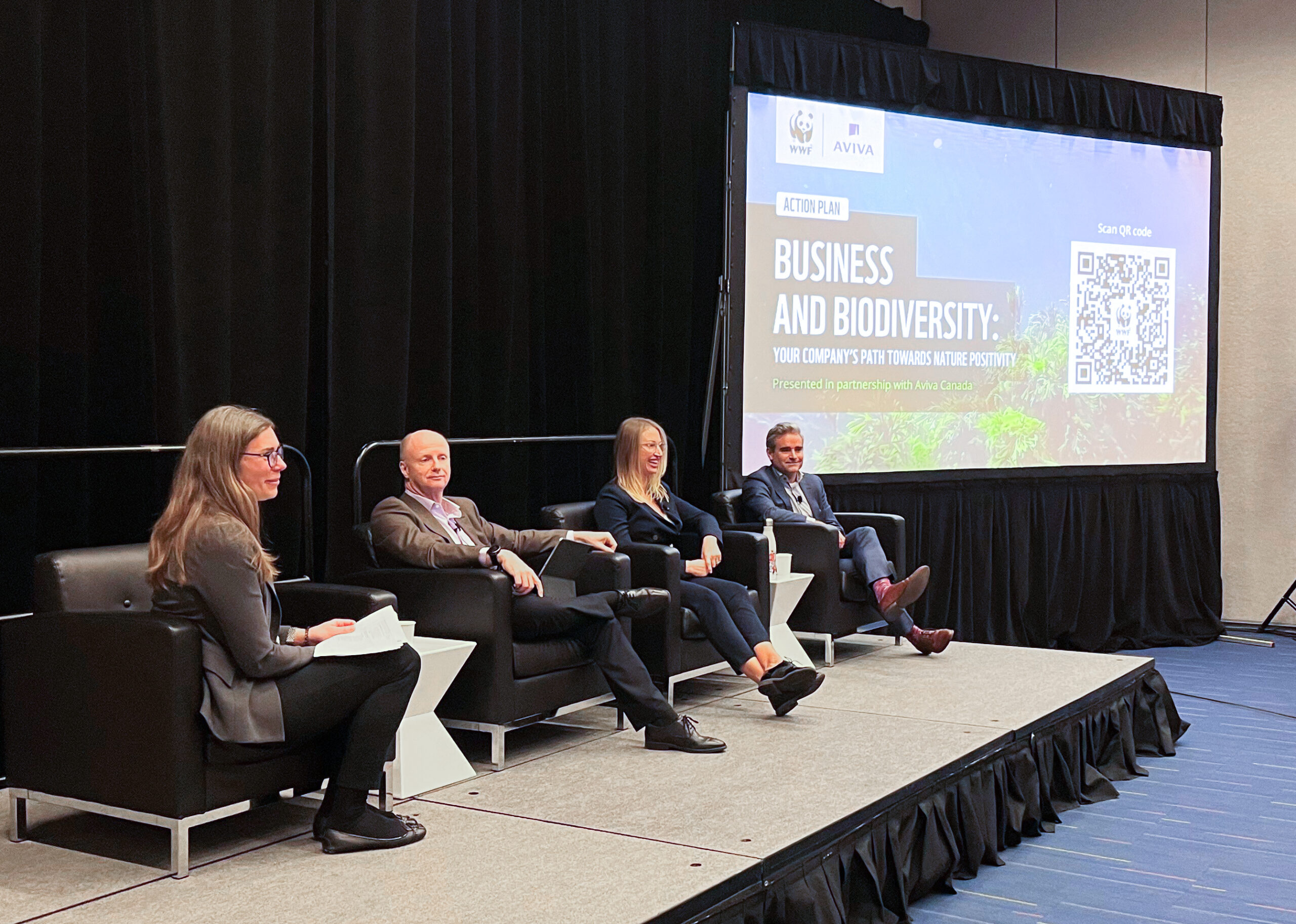What’s special about a song sparrow taking a break from its busy schedule of foraging and singing?
Not much, at first glance. But look a little closer.
 A song sparrow perched on a tree in the Minesing Wetlands north of Toronto. © Kevin Lamb / WWF-Canada
A song sparrow perched on a tree in the Minesing Wetlands north of Toronto. © Kevin Lamb / WWF-Canada
The branch the bird sits on is part of a habitat that was planted by volunteers and staff of the Nottawasaga Valley Conservation Authority (NVCA) in the Minesing Wetlands, a wetland north of Toronto sometimes called the “Everglades of the North.” This habitat is home to dozens of species, from the common (like our sparrow pal) to the end…
What’s special about a song sparrow taking a break from its busy schedule of foraging and singing?
Not much, at first glance. But look a little closer.
 A song sparrow perched on a tree in the Minesing Wetlands north of Toronto. © Kevin Lamb / WWF-Canada
A song sparrow perched on a tree in the Minesing Wetlands north of Toronto. © Kevin Lamb / WWF-Canada
The branch the bird sits on is part of a habitat that was planted by volunteers and staff of the Nottawasaga Valley Conservation Authority (NVCA) in the Minesing Wetlands, a wetland north of Toronto sometimes called the “Everglades of the North.” This habitat is home to dozens of species, from the common (like our sparrow pal) to the endangered (like the cerulean warbler and the Hine’s emerald dragonfly). Also, its foliage captures carbon from the air and transfers it into the boggy ground while its roots help make the soil spongier and better equipped to absorb rainwater and flooding.
All that from a little bird on a branch.
This subtle sign of hope is one of many we’ve seen from WWF-Canada’s Nature and Climate Grant Program (NCGP), presented in partnership with Aviva Canada. The program supports nature-based climate solutions applied on the ground and in the water by community-based organizations across the country, as we work towards our ambitious goal to Regenerate Canada.
More than four years in, the numbers are impressive: NCGP participants like the NVCA have restored more than 1,600 hectares of degraded lands and waters, planted more than 1.8 million native trees and shrubs, and improved the habitats of at least 57 local populations of species at risk — all while helping thousands of Canadians become more resilient to the effects of climate change. And they’ve given us lots of reasons to be optimistic about our future.
Here are nine hopeful takeaways.
1. We can turn pavement into “paradise”
 Project Watershed volunteers weed, mulch and transplant native trees and shrubs at Kus-kus-sum. © R. Reimer
Project Watershed volunteers weed, mulch and transplant native trees and shrubs at Kus-kus-sum. © R. Reimer
At the site of a former sawmill in Courtenay, B.C. known as Kus-kus-sum, the community organization Project Watershed endeavored to “unpave paradise.” With the City of Courtenay and the K’ómoks First Nation (KFN), they engaged in a multi-year project to remove vestiges of the three-hectare site’s industrial past — including concrete, rebar and, soon, a massive steel retaining wall — and regenerated it as marshland and forest abutting the K’ómoks estuary. Their restoration plan draws from several sources: the past (historical photographs), the present (a nearby conservation area) and the future (projections for higher sea levels and increased flooding), all rooted in the cultural understanding and needs of the KFN. There’s still plenty of work ahead at Kus-kus-sum, but the project offered a concrete example (pun intended) of how to design a landscape that reverses the impact of industry and respects the needs of nature.
2. We can create safe spaces for species
Many rivers in B.C., including Vancouver Island’s Hiłsyaqƛis (Tranquil Creek), are experiencing a worrying decline in salmon populations due to various factors, including excessive sediment runoff from slopes that have been clearcut. This sediment flows downstream, infilling pools and creating warmer and shallower rivers than these cold-water fish need.
 A bird’s-eye view of a salmon pool bioengineered by Redd Fish Restoration Society in Hiłsyaqƛis (Tranquil Creek) on Vancouver Island. © Ross Reid
A bird’s-eye view of a salmon pool bioengineered by Redd Fish Restoration Society in Hiłsyaqƛis (Tranquil Creek) on Vancouver Island. © Ross Reid
In 2022, Redd Fish Restoration Society, an NCGP participant, devised a solution to this problem by creating a holding pool for spawning salmon using 92 logs, five stumps and a whole lot of expert care and consideration.
Soon after it was built, chum salmon started using it to take refuge from bears; and when an extended drought hit the area a few months later, it became a critical space for spawning adults and rearing juveniles. With careful interventions, we can help provide species at risk the healthy habitats they need to thrive and restore even the most degraded spaces.
- **Take action: **Hear what you can do to prevent and manage erosion from Jessica Hutchinson and Mandala Smulders of the Redd Fish Restoration Society
3. We can strengthen weakened soil
 Wildflower seeds were planted at a grassland being restored by the Nottawasaga Valley Conservation Authority. © Kevin Lamb / WWF-Canada
Wildflower seeds were planted at a grassland being restored by the Nottawasaga Valley Conservation Authority. © Kevin Lamb / WWF-Canada
Healthy soil — that is, soil that’s crumbly, well-drained, rich in organic material and teeming with microscopic life — is a quiet hero in the quest to reverse the effects of climate change and biodiversity loss. It absorbs rain and floodwater caused by extreme weather, supports microbes and insect life, stores carbon, is drought resilient and enables the growth of both native plants and crops.
In the three years the Nottawasaga Valley Conservation Authority (NVCA) was part of the NCGP program, the organization engaged in a host of projects to boost damaged and degraded soils in its watershed. On a bit of marginal farmland near Mono, Ont., for example, the NVCA reintroduced dozens of species of native grasses and wildflowers, providing welcome habitat for at-risk birds like the bobolink and Eastern meadowlark.
Within two years, the hardy root structures of these grasses and wildflowers had taken hold in the ground and the soil was absorbing water at a rate about four times faster than it did before. The deep roots, and the living soil ecosystem they support, helped to break up the compacted soil and provide that flood protection.
- **Take action: **Read the advice of the NVCA’s Shannon Stephens on how to enjoy the benefits of native grasslands in your own backyard
4. We can use native plants to capture carbon**
**
 Carbon monitoring at one of the KWRC’s riparian restoration sites on the Kennebecasis River. © KWRC
Carbon monitoring at one of the KWRC’s riparian restoration sites on the Kennebecasis River. © KWRC
We know trees are good at sequestering carbon and we’re learning how much shrubs and other plants also play a role in removing carbon from the air and storing it in soil.). The Kennebecasis Watershed Restoration Committee (KWRC) has focused on better understanding just how effective they are.
Over the past few summers, as KWRC planted thousands of native willow stakes, shrubs and trees on the banks of its rivers and tributaries near Sussex, N.B., the group also conducted baseline studies to measure carbon in the soils of the restored sites; developed protocols to continue monitoring carbon as the vegetation matures; and partnered with community organizations, the Hammond River Angling Association and the Belleisle Watershed Coalition, to hold events showing volunteers how to do it.
While it’s too early to know definitively how much carbon these restored riparian ecosystems are storing beneath their branches and roots, there’s no doubt that many more people now have a much better understanding of the role nature-based restoration can play in decarbonization.
- **Take action: **Find out how to make your yard more nature-friendly with native shrubs, with advice from Ben Whalen of the KWRC
5. We can sow seeds of change
 ALUS works with landowners to convert marginal farmland areas into biodiverse ecosystems, including this wetland in Elgin County in southwestern Ontario. © ALUS
ALUS works with landowners to convert marginal farmland areas into biodiverse ecosystems, including this wetland in Elgin County in southwestern Ontario. © ALUS
ALUS, a three-year NCGP participant, has been thoughtfully helping to reshape the form and function of farmland in Canada. Working with landowners and community partners, they offered farmers and ranchers sustainable and nature-friendly project opportunities that facilitated habitat and ecological restoration, such as introducing delayed grazing schedules for livestock to protect at-risk birds in Outaouais, Quebec.
And they also created spaces that improve water quality, protect against excessive flooding, sequester carbon and improve biodiversity by, for example, introducing buffers of native shrubs and grasses alongside a creek in Ontario’s Lambton County.
These seemingly minor changes made a big difference. From 2021 to 2024, ALUS restored 185 hectares of grassland, forest and wetland — more than twice the project’s target — in five rural regions in Quebec and Ontario.
- **Take action: **Learn how you can benefit from healthy wetlands in your community from Alyssa Cousineau of ALUS
6. We can equip the next generation
In a series of ravines and meadows on the eastern edge of Toronto, Friends of the Rouge Watershed (FRW) equipped legions of city-dwelling young people to tackle the dual crises of climate change and biodiversity loss.
 Friends of the Rouge General Manager Jim Robb (centre) educates a group of student volunteers during a native tree-planting event in Markham, Ont. © Deborah Aarts / WWF-Canada
Friends of the Rouge General Manager Jim Robb (centre) educates a group of student volunteers during a native tree-planting event in Markham, Ont. © Deborah Aarts / WWF-Canada
Through FRW’s participation in the NCGP for two years, the organization provided hands-on environmental education to nearly 4,500 volunteers — most of whom are children and teens from local schools and community organizations.
Under the instruction and supervision of FRW’s experienced staff, these young folks learned about nature-based restoration and got a chance to plant native trees, wildflowers and shrubs. Most walked away with a new understanding of, and appreciation for, the wildlife in their own backyards. As longtime FRW general manager Jim Robb told us, “There’s reason for optimism — I get to see it every day.”
- Take action: Understand how native plants can help you manage invasive species from the FRW’s Jim Robb
7. We can support Indigenous-led conservation
 Tree planters reforesting fire-impacted land in Secwépemc territory. © New Parallel Studios / WWF-Canada
Tree planters reforesting fire-impacted land in Secwépemc territory. © New Parallel Studios / WWF-Canada
During spring 2024, the NCGP began supporting the efforts of the Secwepemcúl’ecw Restoration and Stewardship Society (SRSS) to restore wildfire-impacted Secwépemc territory in B.C.’s Interior. SRSS is an Indigenous-led organization initially established in response to the 2017 wildfire season that blazed through more than 190,000 hectares of Secwépemc traditional territory.
Studies show that Indigenous-managed lands boast higher levels of biodiversity, and we know that Indigenous-led nature-based solutions are the most effective and equitable way to safeguard habitat, reverse wildlife loss and reduce the impacts of climate change.
More proof of the efficacy of this approach? In the 2024 and 2025 planting seasons, the SRSS planted nearly 1.5 million native trees on around 1,000 hectares of fire-damaged land, restoring critical habitats for more than a dozen at-risk or culturally significant species.
8. We can work towards a nature-positive economy
 Kathrin Majic, SVP Development, WWF-Canada, moderating a session on business and biodiversity with speakers from Aviva Canada, Loblaw Companies Ltd. and PwC Canada. © Laurence C. Desrosiers / WWF-Canada
Kathrin Majic, SVP Development, WWF-Canada, moderating a session on business and biodiversity with speakers from Aviva Canada, Loblaw Companies Ltd. and PwC Canada. © Laurence C. Desrosiers / WWF-Canada
As effective as the on-the-ground and in-the-water efforts of our grantees were, they can’t tackle the biodiversity and climate crises on their own, especially when business activity is responsible for the vast majority of the biodiversity damage caused by humans.
Over the past four years, WWF-Canada and Aviva Canada have collaborated on several initiatives to inform the business and finance community of their responsibility — and opportunity — to advance a nature-positive economy. We’ve contributed op-eds in the business pages of national newspapers and made our case on LinkedIn. We’ve convened conversations for audiences of business decision-makers at COP15 in Montreal, at WWF-Canada’s Corporate Partnerships Summit in Toronto, at GLOBE Forum in Vancouver and at The Globe and Mail’s 2025 Road to Net Zero summit.
And we jointly developed an Action Plan for Business and Biodiversity — a practical set of guidelines meant to help businesses in all industries to take urgent action to protect biodiversity. With every touch point, we’ve seen more and more heads nodding, fielded more and more questions and watched more and more businesses take action. Momentum is building, and we’re proud to be part of the movement.
- Take action: Read our Action Plan for Business and Biodiversity, and commit to applying it to your own work
9. We can do more together
 Aviva Canada employees plant native tree seedlings at a Markham, Ont. site being restored by Friends of the Rouge Watershed. © Kevin Lamb / WWF-Canada
Aviva Canada employees plant native tree seedlings at a Markham, Ont. site being restored by Friends of the Rouge Watershed. © Kevin Lamb / WWF-Canada
None of our NCGP grantees work in isolation. Their success is highly dependent on strong, sustained partnerships with a diverse range of Indigenous rights and title holders, private landowners, municipal governments and hundreds of dedicated volunteers unafraid to, quite literally, get their hands dirty.
Our ability at WWF-Canada to support their work is similarly a team effort. It wouldn’t happen without the financial backing of organizations willing to put their money where their mouth is, organizations like Aviva Canada. They committed more than $3 million towards the NCGP, supporting the vital restoration work of more than a dozen grantees over the past four years.
Nature-based restoration is not a quick fix: It requires commitment, patience and many collaborators contributing in the best way they can. Turns out, we really are stronger together.
- **Take action: **Find out how you can get involved by emailing us at [email protected]